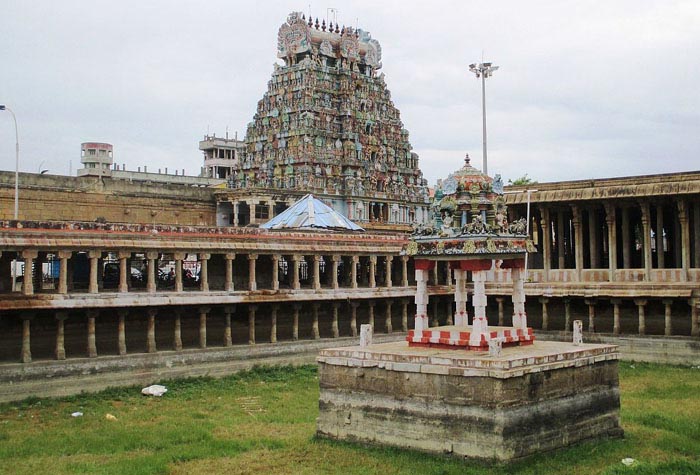Jambukeswarar Temple Thiruvanaikaval

Information of Jambukeswarar Temple, Thiruvanaikaval, Tiruchirappalli, Tamil Nadu
The Jambukeswarar Temple is also popularly known as Thiruvanaikaval and is regarded as quite a popular temple dedicated to Lord Shiva in Tiruchirapalli, Tamil Nadu. The temple is known to be counted amongst the five main Shiva Temples in the entire state of Tamil Nadu. The five well known Shiva Temples symbolizes one of the basic five elements of nature and the Jambukeswarar temple is known to symbolize the element of water. It is an important temple where hundreds of devotees, following Lord Shiva show their gratitude by offering prayers and chanting the holy mantras dedicated to Shiva.
Jambukeswarar Temple Religious Significance
Lord Shiva is represented in the form of a lingam in all the mentioned temples and it is believed that the five basic constituents of nature are preserved in the five different lingams with unlike names on the basis of the constituents symbolized by them. In the temple of Jambukeswarar, Lord Shiva is assumed to have appeared as water and is therefore, known as the Appu Lingam. The prayer ceremony conducted in the afternoons is quite popular owing to the actuality that the Lord was worshipped by Akilandeswari in Jambukeswarar temple and so, even till date the temple priest at noon offers prayers to the Gau Maatha or Cow and Jambukeswara being dressed like a woman. The afternoon prayer is attended by numerous followers or disciples every day. An unique species of cow, Karam Pasu which is black in colour is used especially for the purpose of worshipping. The lingam is washed with rice every day as a part of the regular ceremony practiced by the temple.
Jambukeswarar Temple Mythology & History
According to the mythology, it is believed that Parvati had once made fun of Shiva's act of self punishment for the larger good of the universe. Lord Shiva intended to express disapproval of Parvati's act and as a result instructed her to descend to earth from his home in Kailasam. According to Shiva's desire Parvati appeared as Akilandeswari and found the forest of Jambu or Thiruvanaikoil so as to carry out her act of self-punishment. Parvati, beneath the tree of Veen Naaval created a lingam with the water from Cauvery river and started her worship. The lingam made by Parvati came to be known as the Appu Lingam or the Water Lingam. Lord Shiva finally made himself visible to Akilandeswari and gave lessons of Siva Gnana to her. It is believed that Akilandeswari faced towards the East while receiving these lessons from the Lord who faced the West.
Mythology states that Shiva had two disciples who lived with him in his abode in Kailash. They were known as Pushpadanta and Malyavan and most of the times argued and fought with one another. In one such brawl Pushpadanta cursed Malyavan and turned him into a spider and Malyavan's curse turned Pushpadanta into an elephant and both were sent down to earth. Both of them in their respective forms came down to Jambukeswaram and carried on their worship of Lord Shiva.
Jambukeswarar Temple Architectural Significance
The Jambukeswarar temple stands as an evident instance of Dravidian style of architecture and was constructed by one of the Early Chola kings named Kocengannan during the 2nd century which is approximately 1800 years before. The temple includes five different enclosed spaces each with a significant amount of area. Numerous small shrines can be found within the second enclosed area. The shrine of Jambukeswara is believed to have a water stream flowing underground and although the water is drained out but it still remains full of water.
- Andhra Pradesh Temples
- Assam Temples
- Bihar Temples
- New Delhi Temples
- Goa Temples
- Gujarat Temples
- Jammu and Kashmir Temples
- Karnataka Temples
- Kerala Temples
- Madhya Pradesh Temples
- Maharashtra Temples
- Odisha Temples
- Punjab Temples
- Rajasthan Temples
- Sikkim Temples
- Tamil Nadu Temples
- Telangana Temples
- Uttar Pradesh Temples
- Uttarakhand Temples
- West Bengal Temples